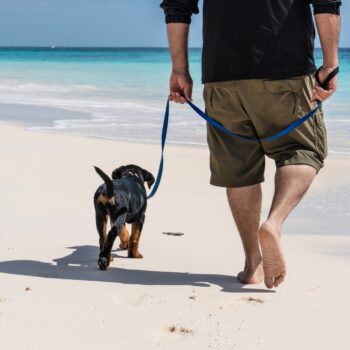Below is the second post in a series featuring Gateway Pet Guardians and their progressive approach to animal sheltering aimed at keeping people and pets together. In the first post in this series, we shared an overview of how they operate and how they’ve pivoted since COVID-19 hit. This post focuses on tactical ways your organization can build community programming as shared in their webcast, Keeping Families Together: Pivoting Community Programming to Support People & Pets During COVID-19. Stay tuned for tomorrow’s post! We have more to come from Gateway Pet Guardians and what they’re doing to reimagine the future of animal sheltering.
Is your animal shelter or rescue organization seeking to build community programming? Jamie Case, Executive Director at Gateway Pet Guardians (GPG), and Community Director, Janet Alderson, share tips on how their organization built their community programming on a shoe-string budget. You can watch their webcast, Keeping Families Together: Pivoting Community Programming to Support People & Pets During COVID-19 at American Pets Alive! to learn more about community programming. They discuss the scope of community programming, how GPG began to where they are now and how they plan to take their next steps.
GPG has been breaking down barriers and bringing hope to the East St. Louis metro area, working with low income families over the past several years. They provide supplies and services to families with pets through their community programming. GPG put community programming in place to help families access these resources, overcoming obstacles such as affordability and access.
“We see the need so hard in our community, and if we went and plucked up all those animals and put them in our shelters we would be over full and we would never be able to get out of this problem,” said Case. “By working with families and seeing how much they love their pets, we can change that narrative.”
Here are seven ways Gateway Pet Guardians built community programming that you can apply in your community:
Leadership that believes in the mission. For smaller organizations, find a leadership volunteer that believes in the mission. If your organization can afford a full staff, ensure the leadership team is on board. Working with underserved communities requires a different approach than usual. No matter what leadership looks like in your organization, it is important that everyone is on board.
“If you cannot afford a full staff member, having that champion really drives the programming,” said Alderson. “That volunteer acts as a cheerleader and challenges people’s thinking.”
Focus on finding donated resources. Finding resources is reliant on your organization putting the word out to find volunteers. Oftentimes, the community is responsive and an abundance of volunteers will excitedly join your mission! In addition, reach out to your county officials. They likely already know that there is an issue within the community, and they can help you amplify your voice or make donations. You can also make partnerships within your communities with other organizations. This is helpful to subsidize expenses, especially when navigating with little to no budget.
Utilize the media. Capitalize on urgency. In Case’s community, extreme weather often created hardships for families and their pets. Reach out to community members and ask them what barriers they are facing and find your angle. Press releases are also a great way to connect with the community.
“The media connected us to a donor who provided us a brand new vehicle for community programming,” said Alderson. “It allows you to connect in ways that you probably never thought.”
Use social media to tell your story. Encourage your community to share stories through photos on social media. Coach families on how to take good photos of their pets to post on your community page in addition to personal pages to reach their friends and family. Personal testimonials on social media are a great way to raise awareness and funds. Remember to always respect boundaries of the families you serve. Some may not feel comfortable sharing – and that is okay! Other community members and volunteers are likely happy to share.
Utilize free tools. This is critical, especially when working with a small budget. Use resources like Google Voice and email that are free to your organization.
Form partnerships. Join coalitions or partner with other organizations outside of animal welfare organizations. GPG joined coalitions with human service organizations, and while it was initially unconventional, it became a new concept of having animal welfare as a part of social services. Reach out to food pantries, social service agencies, the fire department, etc. Don’t forget to include the veterinary community as well.
Track your data. While it is always important to track data to measure the impact of your organization, it is also important for the future of your community programming. To continue to grow, be sure to track how many hours your organization spent in the field, supplies distributed, volunteers working with families, etc. Funders will often want to know data before committing to building your community programming further.
“Our working motto is try, fail, try again. We pivot so much in our programming and especially due to COVID-19. Recognize when things don’t work and be okay with changing programming based on what you’re learning in the community,” said Alderson. “Change is scary and it can be risky. But it is important that when you recognize a need, to find data to support any switches in your programming, it can yield a positive outcome.”
In case you missed it, catch up on yesterday’s post to learn what GPG is doing to keep people and pets together in their community by reimagining the future of animal sheltering. Don’t miss tomorrow’s post on ways to overcome potential barriers such as forming collaborations, gaining veterinary support and more!
Learn more about community programming in the recorded webcast, Keeping Families Together: Pivoting Community Programming to Support People & Pets During COVID-19, on AMPA!

